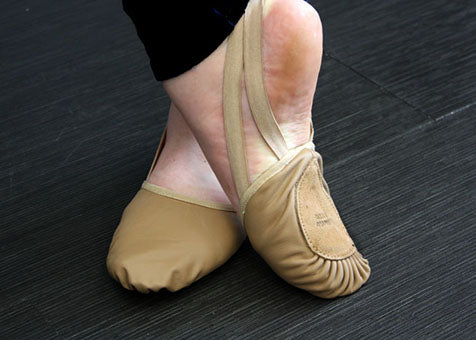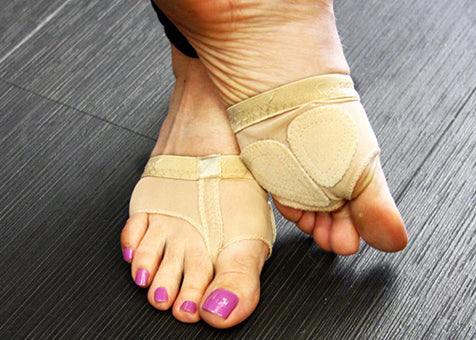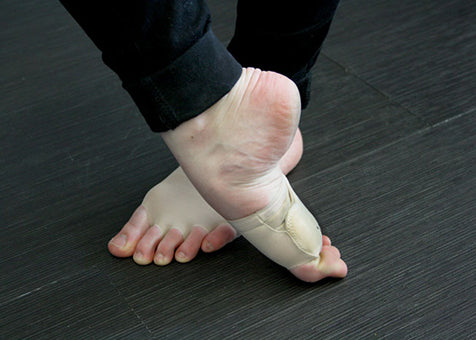Whether it’s for competition or for class, fitting a turning shoe (or turner,) can be confusing for a first-time wearer. As always, check with your instructor to see what type of fit they want their students to have. In this post, we’ve outlined our favourite way to fit turning shoes.
Half-Sole Style Shoe

In a half-sole shoe like a Hanami Pirouette, we like to fit it quite snugly to the foot. The most important part of the turning shoe is the turning pad. When fitted, make sure that you test out the shoe en relevé to see if the sole is actually under the ball of your foot because if it isn’t, they can actually make it harder to turn than in bare feet. Since turning shoes are designed to give the illusion that dancers are barefoot, they look best when they’re snug against the foot. Judges tend to dock marks if a shoe is sloppy onstage, and we don’t want a gappy shoe to hide good technique. Not only do they look better, they’re easier and safer to dance in as well. These shoes are typically made from a very soft leather and will stretch a lot when they get warm, so if it’s a little snug in that case, it’s perfect. If you choose to buy one made from canvas, know that they won’t stretch anywhere near the same amount that the leather ones do, so having a comfortable fit that’s close to the foot (like a sock,) is ideal.
FootUndeez

For shoes like FootUndeez, people often buy them too small for their foot since they think the tighter, the better. The band that goes around the middle of your foot shouldn’t be digging into the skin. If your foot bulges out behind the band, try a size or two up and see if they feel better. On the other hand, if you can fit a finger all the way into the band, they may be too big. FootUndeez won’t stretch as much as other shoes, simply because of the material that they’re made out of. Dancers will typically only notice minor stretching in the toe holes. As with any turning shoe, make sure that the sole is directly underneath the ball of your foot to get the best turning experience.
Dance Paws

In a Dance Paw where there are individual toe holes, having an improper fit can lead to a lot of annoying discomfort which can distract you during your dance. Make sure that there aren’t any gaps around the toe holes, but also that they aren’t digging into your foot. Again, it’s most important that the turning sole is directly beneath the ball of the foot so you can turn as easily as possible. Dance Paws (like FootUndeez,) tend not to stretch too much over time. You may notice a slight difference in and around the toe holes.
If you have any questions about how your turning shoes fit, feel free to send us an email, or drop by our store to speak with a dancewear professional.


Comments (0)
Back to Dance News & How To's